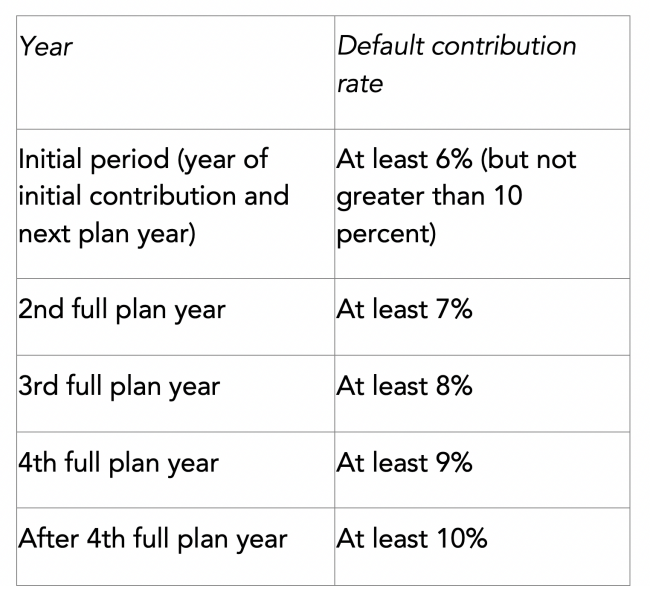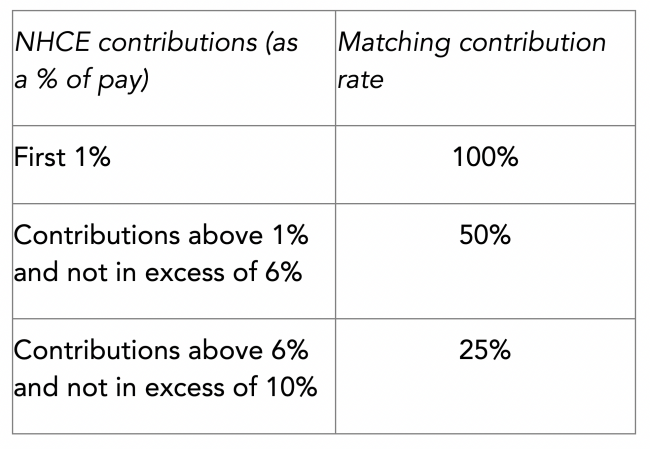Portman and Cardin propose comprehensive retirement policy legislation
Senators Portman (R-OH) and Cardin (D-MD) have released a summary and discussion draft of “A Bill To Enhance Retirement Security” (“Portman Cardin 2018”), proposing significant changes to current rules not included in either the House Republicans’ Family Savings Act (FSA) or the Senate’s bipartisan Retirement Enhancement and Savings Act (RESA). In this article we review some of the key provisions in their proposal.
Senators Portman (R-OH) and Cardin (D-MD) have released a summary and discussion draft of “A Bill To Enhance Retirement Security” (“Portman Cardin 2018”), proposing significant changes to current rules not included in either the House Republicans’ Family Savings Act (FSA) or the Senate’s bipartisan Retirement Enhancement and Savings Act (RESA). In this article we review some of the key provisions in their proposal.
Proposals to expand coverage and increase savings
Portman Cardin 2018 includes a number of proposals intended to grow 401(k) plan participation and savings.
New 401(k) ADP testing safe harbor: It would add a new 401(k) actual deferral percentage (ADP) testing auto-enrollment/escalation safe harbor. To qualify for this safe harbor, the plan would have to default employees into saving at the following rates:

And the plan would have to provide matching contributions for non-highly compensated employees (NHCEs) at the following rates:

Small employer matching contribution credit: The proposal would provide for a tax credit for small employers (generally, employers with 100 employees or less) with respect to matching contributions made under this safe harbor for NHCEs, for the first 5 years of participation, of up to 2% of the NHCE’s compensation.
Increase the small plan startup credit: The proposal would increase the startup tax credit for small employers from $500 to $5,000 and the percentage-of-startup-costs limit from 50% to 75%.
Small employer re-enrollment credit: The proposal would provide small employers with a $500 per year tax credit for each 3-year re-enrollment period implemented. During re-enrollment, generally, participants that are not contributing at the new-employee default contribution rate in an eligible automatic contribution arrangement would be re-defaulted at that rate.
Expansion of the Saver’s Credit: The Saver’s Credit currently provides for a non-refundable tax credit equal to up to 50 percent of the first $2,000 of contributions by certain low-income individuals to a 401(k) plan, IRA or certain other retirement programs. Portman-Cardin 2018 would increase the income limits applicable to the Saver’s Credit; make the credit refundable; and require that, instead of being credited directly to the taxpayer, the credit would be paid to a qualified plan or other “applicable retirement plan.”
Allow long-term part-time employees to participate in 401(k) plans: It would require that 401(k) plans allow long-term part-time employees (with at least 3 consecutive years of at least 500 hours of service) to participate. These employees could, however, be disregarded for purposes of most Internal Revenue Code nondiscrimination rules.
Student loan repayments treated as elective deferrals for purposes of matching contributions: The proposal would generally allow a plan to treat a student loan repayment (subject to certain limits) as “match-able” pursuant to rules similar to those applicable to “regular” 401(k) employee contributions (aka “elective deferrals”). The loan repayment itself, however, would not be considered an employee contribution (e.g., for purposes of ADP testing).
Simplification of auto-enrollment/escalation rules: Treasury would be instructed (generally) to simplify auto-enrollment/escalation rules (including notice rules) and (specifically) to simplify current rules that apply differently to different employees at the same employer.
Relaxing rules for the correction of inadvertent errors, expansion of EPCRS
The proposal would significantly reduce the difficulty of correcting errors by (1) simplifying the process of correcting automatic contribution errors, (2) instructing Treasury to significantly expand the ability of sponsors to self-correct inadvertent errors under theEmployee Plans Compliance Resolution System(EPCRS) and (3) allowing self-correction of certain required minimum distribution (RMD) errors without penalty. In connection with these changes, Treasury would be instructed to expand the safe harbor corrections available under the EPCRS with respect to inadvertent failures.
In addition, Treasury would be instructed to modify the EPCRS “to clarify that in no case shall any person be required to seek recoupment of an inadvertent overpayment” and (with certain exceptions) to allow treatment of an inadvertent overpayment as a qualified rollover.
Increase the flexibility of the RMD rules
Portman Cardin 2018 would make a number of changes in the RMD rules, including:
An increase in the mandatory distribution age. Internal Revenue Code section 401(a)(9) generally requires that distributions under a qualified plan begin as of the later of age 70 1/2 or when a participant retires. The proposal would increase the age 70 1/2 “required beginning date” as follows:

An instruction to Treasury to eliminate the (current) limitation on qualified longevity annuity contracts (QLACs) to 25 percent of an individual’s account balanceand to increase the dollar limit on QLACs from $125,000 to $200,000.
A provision that the RMD rules do not apply to participants with retirement plan balances of $100,000 or less (indexed and subject to a $10,000 “phase-out”).
An instruction to Treasury to update the life expectancy tables used to calculate RMDs.
Other proposals
Other retirement savings plan-related proposals in Portman Cardin 2018 include:
Uniform age59 1/2 in-service withdrawal age: Under current rules, 401(k) plans may permit withdrawals beginning at age 59 1/2. In-service distributions under a DB plan, however, currently generally may not begin before age 62. The proposal would lower the DB in-service withdrawal age to 59 1/2.
Allow employees to elect to pay (or not pay) for retirement planning services without triggering “constructive receipt” of income.
Apply the minimum participation rule (which currently requires that a plan cover at least 50 employees or 40% of employees in the employer’s controlled group) separately to “bona fide separate subsidiaries or divisions.”
Allow “small immediate financial incentives” (e.g., a toaster) for 401(k) plan contributions.
Allow the distribution of certain annuity contracts and managed account investments, generally when they are “no longer authorized to be held as an investment option” under the plan.
Instructs DOL and Treasury to adopt regulations allowing for the consolidation of a number of Internal Revenue Code- and ERISA-required notices. Those regulations may “permit and facilitate innovations that enhance the effectiveness of such notices” (a reference, it appears, to expansion of the use of electronic notices). The proposal would also instruct Treasury to simplify current distribution notice rules.
Use of “blended” benchmarks: The proposal would instruct DOL to produce regulations allowing benchmarking of funds (e.g., for required participant disclosure) that include multiple asset classes (e.g., balanced funds and target date funds) based on a benchmark that is a blend of different broad-based securities market indices.
Instructs Treasury to modify Internal Revenue Code compensation rules applicable to 401(k)plans to facilitate the use of base pay or rate of pay in determining contributions or benefits.
Outlook
Senators Portman and Cardin have been cooperating on the development of bipartisan retirement policy legislation for more than 20 years.
The legislative language being circulated has not yet been introduced as a bill. Presumably, it will be formally introduced in the next Congress. At this point it seems unlikely that it would be included in any lame duck legislation.
The chances of 2018 lame duck retirement policy legislation may depend on the outcome of the November election. The current situation – consideration by Congress of bipartisan retirement policy legislation – is fluid.
We will continue to follow these issues.
